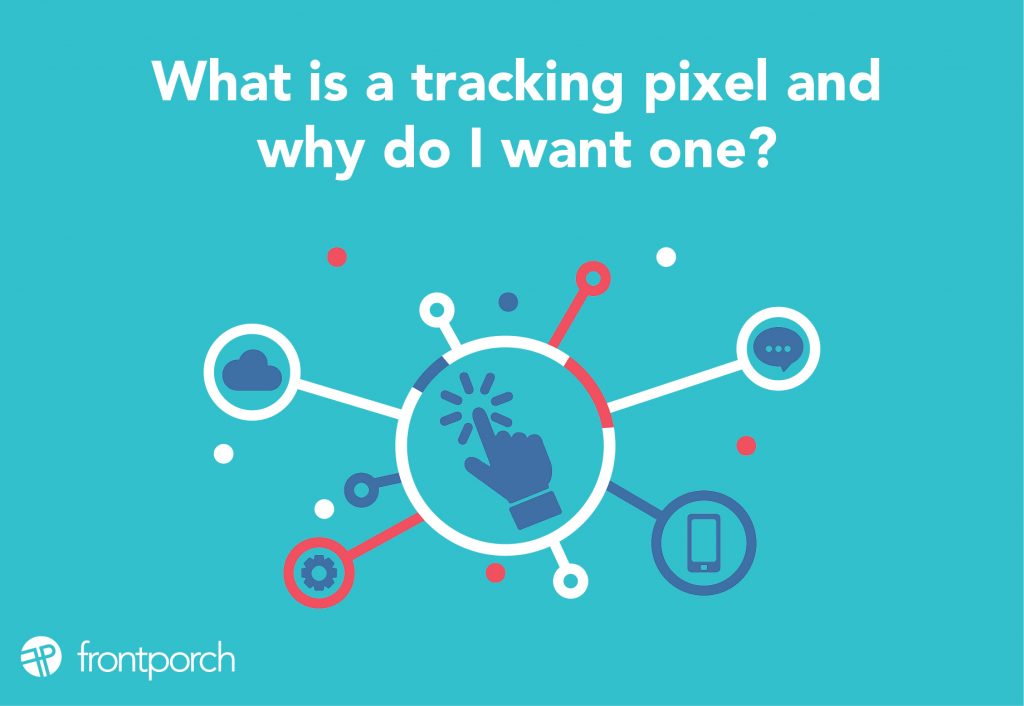
A tracking pixel is a little HTML code that tracks behavior from your customers – it records for instance when a user visits your website or opens an email from you, or interacts with a banner ad that your brand has created. It essentially fills the same role as a cookie but tracking pixels cannot be blocked by normal browsers like cookies, so they offer an alternative information tracking process.
A tracking pixel is also a tiny graphic with the dimension of 1 pixel by 1 pixel. Because it is this tiny, no one notices when it is included on a website or in an email because it is usually designed to blend into the graphics.
Brands can use a tracking pixel to gather this behavior data and then analyze it to make better decisions on what to put on their website, in their emails, on their social channels. Where are most of your customers located so you can market to them at a local level? Are most of your customers are on-line late at night, so it would make more sense to schedule your emails or social media when they are on-line looking for answers? Maybe a tracking pixel could give you more insight into answering questions like these.
How Does a Tracking Pixel Work, and What’s in it for You?
By adding this little snippet of code to a website or email, the brand links a piece of content – like a web page, an email, or a banner – to the pixel’s server. Then when a user, let’s say visits the brand’s website (where the tiny pixel is) the code gets processed by the browser being used and is then registered and noted in the server’s log files.
When this process occurs, several different pieces of information can be transferred in regard to the content that a user is interacting with. Brands can find out answers to questions like:
- What is the screen resolution of this device?
- Is this content being viewed on a mobile device or desktop?
- What is the OS of device the customer is using?
- Is the customer looking at your content in a browser or in an email program?
- What is the IP address and location of the viewer?
- When was the content was viewed?
- What types of ads does the customer like clicking on?
One of the most common use of tracking pixels is for retargeting. Did you just look at a pair of shoes yesterday and now you’re seeing those shoes in Instagram? Do you feel like you were just talking about a specific thing and BOOM there it is in Facebook? That is a tracking pixel doing its job. That little guy is trying to be helpful!
Tracking pixels are also used to measure a marketing campaign’s performance or track conversions. They can be used to build an audience base for a new product or service.
How to Insert a Tracking Pixel
Web and social analytics tools such as Google Analytics and the analytics available within Facebook for Business, for instance, give brands thorough explanations and tutorials on implementing tracking pixels. There are two ways to include a tracking pixel in your website:
- Through your CMS dashboard.
- In the hardcode of your website. If this is the case, you will need to get your web developer involved.
What’s in it for your customers?
Tracking pixels can benefit customers over time, as the data garnered can be used to make offers more relevant, questions answered more readily, and overall make the user’s experience better. Privacy advocates argue that pixels violate user privacy and allow spammers access to personal data more readily. User consent must be secured first and GDPR rules require the choice of opting-out of being tracked.
Many of the data points tracked and logged by a tracking pixel can be helpful information to brands when they decide what to highlight on their website – which part of the website is the most popular and gets the most traffic? One could infer that this particular content is valuable and sought after and therefore create more like it to be more helpful to their customers in the future.
Use tracking pixels wisely and carefully by being a responsible brand – answer their questions, be helpful, get them the information they need. In this way, the tiny tracking pixels can yield big results for both you and your customers.
